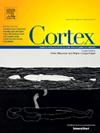在改进的儿童连续表现任务中,非常年幼的ADHD儿童抑制控制区的招募减少:一项功能磁共振成像研究
IF 3.3
2区 心理学
Q1 BEHAVIORAL SCIENCES
引用次数: 0
摘要
注意缺陷多动障碍(ADHD)的症状特征在整个发育过程中会发生变化,这使得ADHD的神经生物学评估在不同的发育阶段具有挑战性。特别是在幼儿(4- 7岁)中,由于缺乏儿童友好的功能磁共振成像(fMRI)范式,测量大脑中的抑制控制网络活动一直是一项艰巨的任务。本研究旨在通过在MRI环境中测量幼儿的抑制控制来解决这些困难。共有56名诊断为ADHD的儿童和78名典型发育(TD) 4-7岁的儿童在BOLD fMRI期间成功地使用改进版的儿童连续表现测试(K-CPT)进行检查,以评估抑制控制。我们还评估了他们在MRI扫描仪外的标准化K-CPT上的表现。我们的研究结果表明,改良的K-CPT在成功扫描的两组中都有效地引发了与抑制控制相关的强劲和预期的大脑活动。两组之间的比较揭示了大脑活动的差异,主要观察到额下回、岛岛前部、背纹状体、内侧前辅助运动区(pre-SMA)和扣带皮层(p <;.005纠正)。值得注意的是,在两组中,右前叶岛活动的增加与在MRI环境外给予K-CPT的反应时间(RT)的改善和RT变异性的降低有关,尽管这在多重比较中没有进行统计校正。该研究还揭示了对这一人群进行扫描的持续挑战——另外51名TD儿童和78名ADHD儿童被扫描,但由于运动原因未能提供可用的数据。总之,对于儿童亚样本,我们通过在BOLD fMRI期间使用改进的K-CPT成功克服了在MRI环境中测量幼儿抑制控制的一些挑战,但在这一人群中进行扫描仍然存在进一步的挑战。这些发现揭示了ADHD和TD儿童抑制控制的神经生物学相关性,为理解ADHD的整个发展过程提供了有价值的见解,并可能为ADHD的诊断和干预策略提供信息。该研究还强调了在非常年轻的临床样本中使用任务功能磁共振成像仍然存在的挑战。本文章由计算机程序翻译,如有差异,请以英文原文为准。
Reduced recruitment of inhibitory control regions in very young children with ADHD during a modified Kiddie Continuous Performance Task: A fMRI study
Attention-Deficit/Hyperactivity Disorder (ADHD) symptom profiles are known to undergo changes throughout development, rendering the neurobiological assessment of ADHD challenging across different developmental stages. Particularly in young children (ages 4- to 7-years), measuring inhibitory control network activity in the brain has been a formidable task due to the lack of child-friendly functional Magnetic Resonance Imaging (fMRI) paradigms. This study aims to address these difficulties by focusing on measuring inhibitory control in very young children within the MRI environment. A total of 56 children diagnosed with ADHD and 78 typically developing (TD) 4-7-year-old children were successfully examined using a modified version of the Kiddie-Continuous Performance Test (K-CPT) during BOLD fMRI to assess inhibitory control. We also evaluated their performance on the standardized K-CPT outside the MRI scanner. Our findings suggest that the modified K-CPT effectively elicited robust and expected brain activity related to inhibitory control in both groups who were successfully scanned. Comparisons between the two groups revealed differences in brain activity, primarily observed in inferior frontal gyrus, anterior insula, dorsal striatum, medial pre-supplementary motor area (pre-SMA), and cingulate cortex (p < .005, corrected). Notably, for both groups increased activity in the right anterior insula was associated with improved response time (RT) and reduced RT variability on the K-CPT administered outside the MRI environment, although this did not survive statistical correction for multiple comparisons. The study also revealed continuing challenges for scanning this population–an additional 51 TD children and 78 children with ADHD were scanned, but failed to provide useable data due to movement. In summary, for a subsample of children, we successfully overcame some of the challenges of measuring inhibitory control in very young children within the MRI environment by using a modified K-CPT during BOLD fMRI, but further challenges remain for scanning in this population. The findings shed light on the neurobiological correlates of inhibitory control in ADHD and TD children, provide valuable insights for understanding ADHD across development, and potentially inform ADHD diagnosis and intervention strategies. The research also highlights remaining challenges with task fMRI in very young clinical samples.
求助全文
通过发布文献求助,成功后即可免费获取论文全文。
去求助
来源期刊

Cortex
医学-行为科学
CiteScore
7.00
自引率
5.60%
发文量
250
审稿时长
74 days
期刊介绍:
CORTEX is an international journal devoted to the study of cognition and of the relationship between the nervous system and mental processes, particularly as these are reflected in the behaviour of patients with acquired brain lesions, normal volunteers, children with typical and atypical development, and in the activation of brain regions and systems as recorded by functional neuroimaging techniques. It was founded in 1964 by Ennio De Renzi.
 求助内容:
求助内容: 应助结果提醒方式:
应助结果提醒方式:


